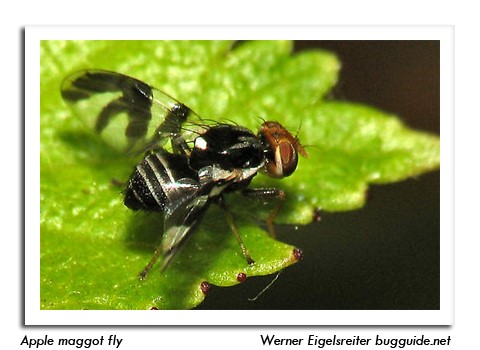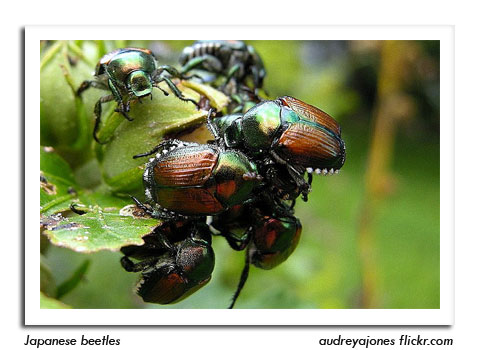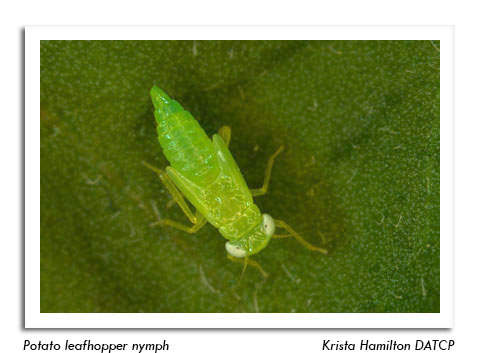
 |
|
|
Fruits
Volume 58 Number 14 Date 08/08/2013 APPLE MAGGOT - Emergence increased abruptly in the past week at several orchard locations. Counts of 15 and 25 flies per unbaited red sphere trap were reported from Rochester and Gays Mills, respectively, while 17 of 27 orchards registered one or more flies. Growers should continue to maintain traps and apple maggot sprays as long as the flies persist and counts exceed established economic thresholds. OBLIQUEBANDED LEAFROLLER - Moths of the second flight are appearing in traps across southern Wisconsin. The summer flight could be prolonged until late August or early September this year if below-normal temperatures continue, in which case surface feeding damage would also persist into fall. The timing of the flight is such this year that some materials applied for codling moth control (Altacor, Avaunt, Delegate, Entrust and Imidan) are also likely to reduce leafroller populations. The insecticides Assail and Calypso targeting apple maggot and codling moth will have no impact on the leafrollers. CODLING MOTH - Since temperatures have not been conducive for rapid degree day accumulations, most orchards have not yet documented the peak of summer moth activity, expected to occur 1,300-1,400 degree days (base 50°F) after the first spring biofix. Apple growers are reminded to replace pheromone lures in preparation for the increase in moth activity. JAPANESE BEETLE - Activity has been delayed and unpredictable this season. A few growers have noted light-moderate damage to 'Honeycrisp' apples, but populations are fairly low for early August. If levels increase this month and treatment is required, growers can minimize insecticide use by treating only susceptible, infested varieties. Conventional growers may use pyrethroids or Imidan for immediate knock-down control, while organic producers could target first with PyGanic and follow-up the next day with Neem oil as a repellent. Controls should be applied on a warm, sunny afternoon, when the beetles are most active, for maximum effectiveness. POTATO LEAFHOPPER - A report from Chippewa County notes the arrival of the leafhoppers last week and associated discoloration of new shoots and mild hopperburn symptoms. Non-bearing, 1- to 2-year-old trees are most susceptible to leafhopper feeding and should be monitored for leaf curling and yellowing caused by the adults and nymphs. Treatment is justified at levels of one or more nymphs per leaf when symptoms are apparent. SPOTTED WING DROSOPHILA - The latest update from UW-Madison Fruit Crops Entomologist, Christelle Geudot indicates flies and/or larvae have now been confirmed in Bayfield, Columbia, Crawford, Dane, Door, Iowa, Racine, Rock, Sauk, Trempealeau and Vernon counties, while infestations are suspected in Buffalo, Jefferson, Kenosha, La Crosse, Monroe, Pierce, Washburn and Wood counties. The infestations are primarily affecting raspberries and other small fruits, although flies have been collected in traps set near peaches. Spotted wing drosophila poses only a moderate risk to unripened peaches, but fruits that drop, become overripe, or split can harbor larvae and should be removed from the orchard after harvest to minimize risk of future infestations. -- Krista Hamilton, DATCP Entomologist 





|
|
|